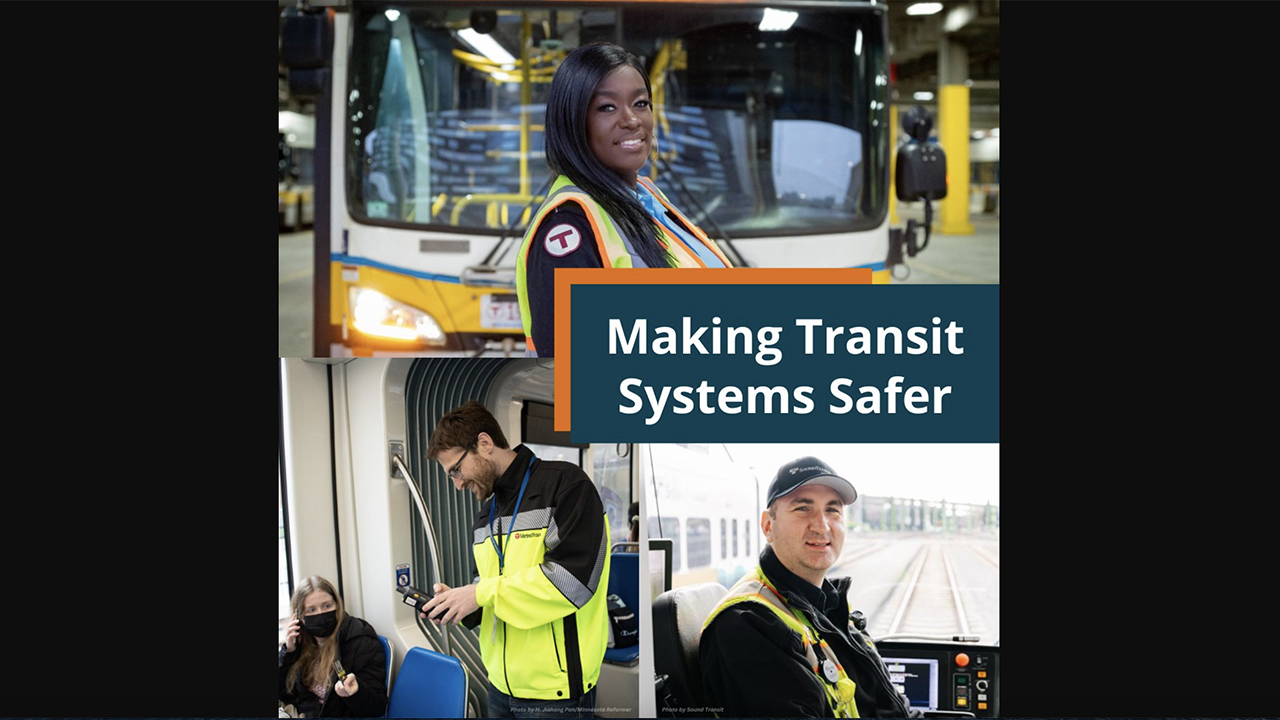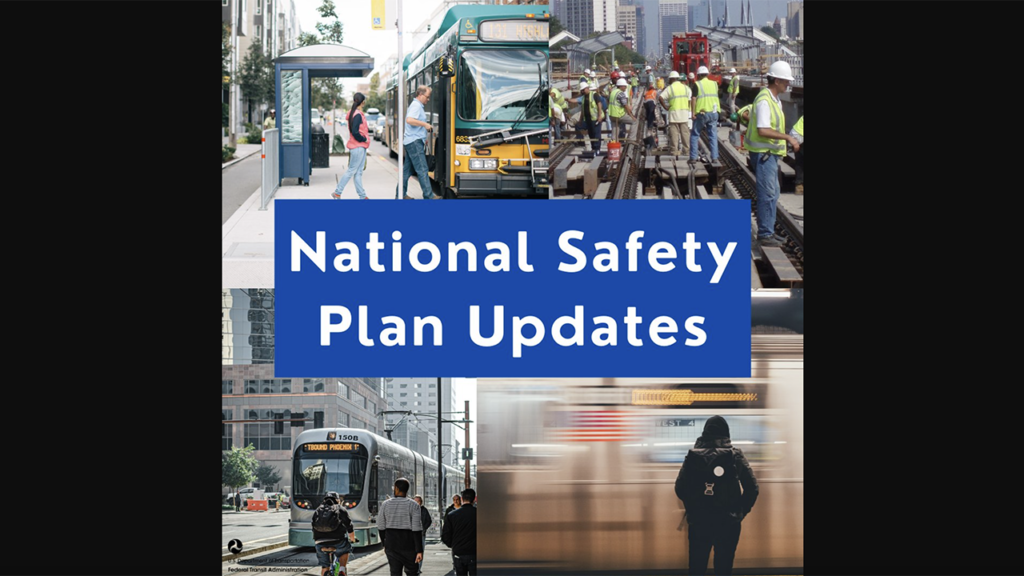
FTA Finalizes Safety Reg, Revises Safety Plan for Transit
Written by Marybeth Luczak, Executive Editor
(Image Courtesy of FTA)
The Federal Transit Administration (FTA) on April 9 announced a final rule updating its Public Transportation Agency Safety Plans (PTASP) regulation, along with a newly revised National Public Transportation Safety Plan, which are said to improve the safety of public transportation “by empowering transit agencies and workers to identify risks, find solutions to mitigate those risks, and ensure the solutions are properly carried out.”
The new rule and revised safety plan are the result of months of work by Biden-Harris Administration leaders and in response to dozens of comments filed by stakeholders, including transit agencies, according to FTA.
PTASP
In the first major update to the PTASP regulation, FTA said it is “increasing frontline transit worker involvement in safety, strengthening communication between frontline transit workers and transit agency management, and requiring the industry to use data to identify and manage safety risk.” The changes apply to more than 700 transit agencies nationwide, “including requirements for transit agencies serving areas with a population of 200,000 or more that largely coincide with the most significant increases in reported assaults on transit workers,” according to FTA.
Under the Infrastructure Investment and Jobs Act (IIJA; also known as the Bipartisan Infrastructure Law), impacted transit agencies are required to establish safety committees with equal numbers of frontline transit worker and management representatives to address safety issues, FTA reported. The updated PTASP regulation includes specific requirements for safety committee membership, procedures, and responsibilities to provide frontline workers more input into safety decision-making.
“A safety committee can recommend safety improvement strategies based on the agency’s safety risk reduction program,” FTA explained. “If approved as part of the larger agency safety plan, transit agencies are required to implement the safety risk mitigations. This includes preventing assaults on transit workers and vehicle-pedestrian collisions.”
Additionally, the new rule requires safety performance targets be set by agencies.
According to FTA, all applicable transit agencies are also required to incorporate de-escalation training for frontline transit workers and minimize exposure to infectious diseases, consistent with guidance from the Centers for Disease Control and Prevention or a state health authority.
Lastly, the updated regulation incorporates the IIJA requirement that transit agencies serving areas with a population of less than 200,000 develop their safety plans in cooperation with frontline transit worker representatives.
National Safety Plan

The National Safety Plan, which was reauthorized under IIJA, “creates a blueprint for transit agencies to adopt stronger safety practices, including mandatory performance measures for transit agencies subject to the PTASP regulation to address assaults on transit workers,” FTA explained.
The updated safety plan, it said, also includes best practices, tools, technical assistance, voluntary standards, and other resources for transit agencies to improve their safety performance related to major events, collisions, and injuries. Additionally, the plan incorporates IIJA provisions for risk-based approaches to reducing injuries and fatalities on transit systems.
“The updated plan supports the Department’s goal of making our transportation systems safer for all, which supports the vision outlined in the National Roadway Safety Strategy,” FTA said. “It also builds upon FTA’s Bus-to-Person Collision Safety Advisory, which calls on transit agencies to assess this safety concern and consider strategies to reduce these types of collisions that accounted for 15% of all transit fatalities between 2008-21, as reported to the National Transit Database.”
The updated National Safety Plan includes 22 performance measures, including eight measures for safety risk reduction programs. Joint labor-management safety committees will now use these measures to set risk reduction performance targets focused on reducing the number and rates of accidents, injuries, and assaults on transit workers, according to FTA.
FTA said it will continue to provide technical assistance to transit agencies regarding the PTASP regulation and National Safety Plan. Transit agencies can sign up for email alerts to receive the latest PTASP and National Safety Plan updates.
“The safe operation of public transit is FTA’s top priority,” FTA Acting Administrator Veronica Vanterpool said. “Today’s [April 9] updates to the National Safety Plan and PTASP regulation reflect our continued commitment, in cooperation with our state and industry partners, that every rider of public transit has a safe and reliable transportation experience.”



